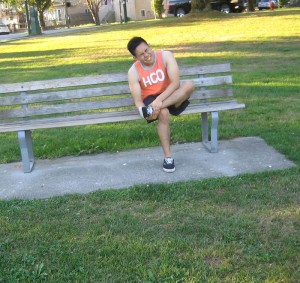Achilles tendon rupture is an injury affecting the back of the lower leg and usually common among people playing recreation sports. It enables a person to stand on tiptoe and point the foot and for running, walking and jumping.
The Achilles tendon is a strong fibrous cord that attaches the muscles found in the back of the calf to the heel bone. Overstretching the Achilles tendon will result to a tear or partial or complete rupture. A popping sound can be heard when the tendon ruptures and severe pain can be felt at the back of the ankle and the lower leg that results to difficulty walking. When starting an activity such as pushing strongly from the toes while starting a race can result to the rupturing of the tendon.
Causes

- Lack of activity or exercise
- Weakening of the Achilles tendon due to age
- Falling from a great height or suddenly stepping into a hole or on a curb that stretches the tendon.
- Previous tendinitis of the Achilles tendon
- Performing activities that requires strong jumping or running such as tennis, basketball, badminton and racquetball.
- Suffering from conditions such as diabetes and arthritis
- Using medications such as corticosteroids and certain antibiotics
Symptoms of Achilles tendon rupture
- A snapping or a popping sound can be heard after the injury
- Difficulty walking and standing on tiptoe
- Severe swelling of the area
- Severe pain can be felt at the back of the calf or ankle
- A gap can be felt in the tendon
- Weakness and bruising of the ankle
Treatment
- Take plenty of rest especially the Achilles tendon. Avoid performing activities that puts plenty of stress on the tendon such as climbing stairs or running. Perform mild impact activities such as swimming while the tendon is still in the healing process for at least a month.
- Apply an ice pack on the affected area for at least 20-30 minutes every 3-4 hours to lessen the swelling and the pain. Continue applying ice on the area for at least 2-3 days until pain disappears.
- Compress the leg using an elastic bandage wrapped around the lower leg and ankle to lessen the swelling of the area. Avoid wrapping it too tight to prevent problems with circulation.
- Elevate the leg above the level of the heart. Raise the leg on a pillow when lying down to keep it elevated.
- Take the prescribed non-steroidal anti-inflammatory drug (NSAIDs) such as acetaminophen to lessen the pain and the inflammation.
- Seek the help of the physical therapist for some rehabilitation exercises such as stretching and strengthening and restoring the range of movement of the affected area.
- Cessation of smoking.
Disclaimer / More Information
The material posted on this page on Achilles tendon rupture is for learning purposes only. Learn to recognize and manage tendon injuries by taking a first aid and CPR class with one of our training providers.
